The number of private and public entities conducting research in synthetic biology worldwide grew significantly between 2009 and 2013, according to the latest version of an interactive map produced by the Synthetic Biology Project at the Woodrow Wilson International Center for Scholars.
Apr 30th, 2013
Read more
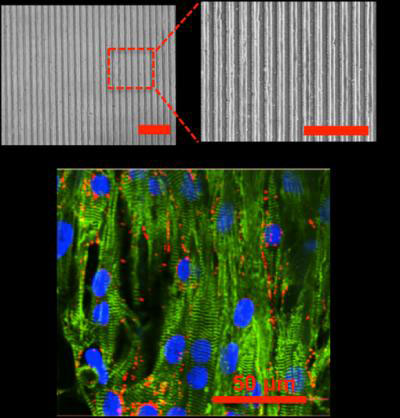 Bioengineers create rubber-like material bearing micropatterns for stronger, more elastic hearts.
Bioengineers create rubber-like material bearing micropatterns for stronger, more elastic hearts.
Apr 29th, 2013
Read more
For the first time, researchers at Karolinska Institutet in Sweden have managed to obtain detailed images of the way in which the transport protein GLUT transports sugars into cells. Since tumours are highly dependent on the transportation of nutrients in order to be able to grow rapidly, the researchers are hoping that the study will form the basis for new strategies to fight cancer cells.
Apr 29th, 2013
Read more
Enzymes could break down cell walls faster - leading to less expensive biofuels for transportation - if two enzyme systems are brought together in an industrial setting, new research by the Energy Department's National Renewable Energy Laboratory suggests.
Apr 26th, 2013
Read more
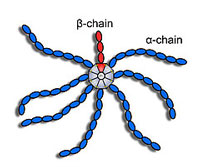 The protein C4BP is similar to a spider in its spatial form with eight 'arms'. The structure of the 'spider body' leads scientists to unconventional ideas - the protein is possibly suitable as a scaffold for the transport of active pharmaceutical substances, particularly biomolecules.
The protein C4BP is similar to a spider in its spatial form with eight 'arms'. The structure of the 'spider body' leads scientists to unconventional ideas - the protein is possibly suitable as a scaffold for the transport of active pharmaceutical substances, particularly biomolecules.
Apr 26th, 2013
Read more
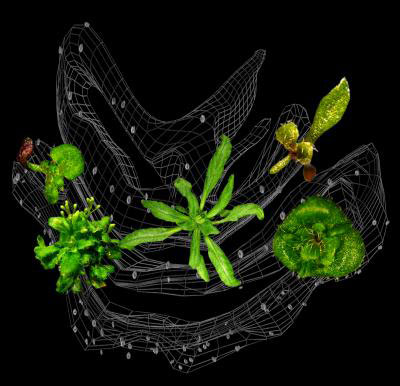 A team of scientists has conducted a study on plants (Arabidopsis) that shows that the site of action of the repression of target gene expression occurs on the endoplasmic reticulum, a cellular organelle that is an interconnected network of membranes - essentially, flattened sacs and branching tubules - that extends like a flat balloon throughout the cytoplasm in plant and animal cells.
A team of scientists has conducted a study on plants (Arabidopsis) that shows that the site of action of the repression of target gene expression occurs on the endoplasmic reticulum, a cellular organelle that is an interconnected network of membranes - essentially, flattened sacs and branching tubules - that extends like a flat balloon throughout the cytoplasm in plant and animal cells.
Apr 26th, 2013
Read more
A study led by Oscar Fernandez-Capetillo has deciphered the components of the machinery that duplicates DNA, the replisome, on which most chemotherapeutic agents currently act.
Apr 26th, 2013
Read more
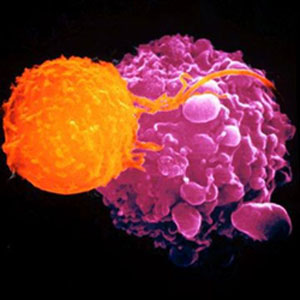 Immune cells in newborn humans appear to be more ready to do battle than previously thought. New Cornell research shows that small populations of preprogrammed immune cells can fight specific pathogens that they have never encountered. The findings, say the researchers, have the potential to revolutionize how and when people are immunized.
Immune cells in newborn humans appear to be more ready to do battle than previously thought. New Cornell research shows that small populations of preprogrammed immune cells can fight specific pathogens that they have never encountered. The findings, say the researchers, have the potential to revolutionize how and when people are immunized.
Apr 25th, 2013
Read more
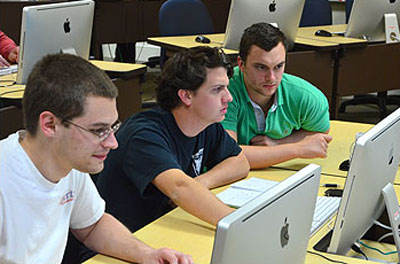 Nine students who are involved in a multi-institutional effort to produce better blueberries only see the fruit as codes, symbols, numbers and letters on computer screens, rather than the nutritional, sweet treat they love.
Nine students who are involved in a multi-institutional effort to produce better blueberries only see the fruit as codes, symbols, numbers and letters on computer screens, rather than the nutritional, sweet treat they love.
Apr 24th, 2013
Read more
A research team led by Cornell University's Creative Machines Lab has created a computer algorithm that can be used to witness virtual creatures evolving their squishy, muscle-like features in order to teach themselves to walk.
Apr 23rd, 2013
Read more
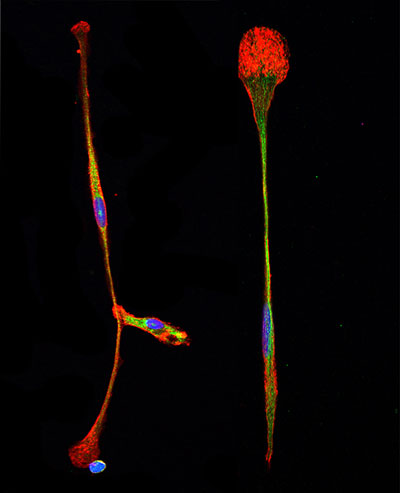 In a serendipitous discovery, scientists at The Scripps Research Institute (TSRI) have found a way to turn bone marrow stem cells directly into brain cells.
In a serendipitous discovery, scientists at The Scripps Research Institute (TSRI) have found a way to turn bone marrow stem cells directly into brain cells.
Apr 22nd, 2013
Read more
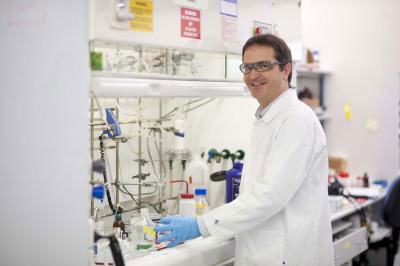 Scientists at the Walter and Eliza Hall Institute and their collaborators have tailor-made a new chemical compound that blocks a protein that has been linked to poor responses to treatment in cancer patients. The development of the compound, called WEHI-539, is an important step towards the design of a potential new anti-cancer agent.
Scientists at the Walter and Eliza Hall Institute and their collaborators have tailor-made a new chemical compound that blocks a protein that has been linked to poor responses to treatment in cancer patients. The development of the compound, called WEHI-539, is an important step towards the design of a potential new anti-cancer agent.
Apr 22nd, 2013
Read more
Researchers from Huntsman Cancer Institute at the University of Utah have developed a novel and powerful technique to identify the targets for a group of enzymes called RNA cytosine methyltransferases in human RNA.
Apr 22nd, 2013
Read more
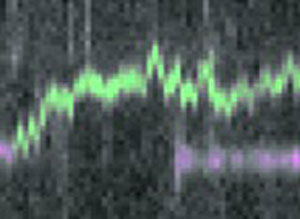 Scientists have revealed how a bacterial enzyme has evolved an energy-efficient method to move long distances along DNA. The findings present further insight into the coupling of chemical and mechanical energy by a class of enzymes called helicases, a widely-distributed group of proteins, which in human cells are implicated in some cancers.
Scientists have revealed how a bacterial enzyme has evolved an energy-efficient method to move long distances along DNA. The findings present further insight into the coupling of chemical and mechanical energy by a class of enzymes called helicases, a widely-distributed group of proteins, which in human cells are implicated in some cancers.
Apr 19th, 2013
Read more
University of Chicago researchers have created a synthetic compound that mimics the complex quantum dynamics observed in photosynthesis and may enable fundamentally new routes to creating solar-energy technologies. Engineering quantum effects into synthetic light-harvesting devices is not only possible, but also easier than anyone expected, the researchers report.
Apr 19th, 2013
Read more
A research team from NPL and the University of Edinburgh have invented a new way to zip and unzip DNA strands using electrochemistry.
Apr 18th, 2013
Read more
Research led by a scientist at the University of York has thrown new light on the way breakdowns in the DNA copying process inside cells can contribute to cancer and other diseases.
Apr 18th, 2013
Read more
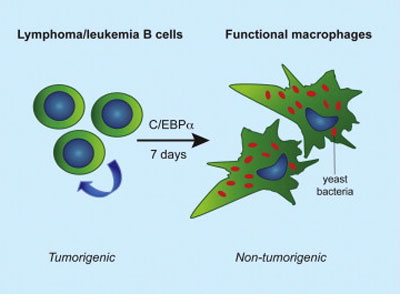 Scientists at the Centre for Applied Medical Research (CIMA) at the University of Navarre and the Centre for Genomic Regulation (CRG) in Barcelona have reprogrammed lymphfoma and leukaemia cells in such a way that they are no longer malignant. The resulting cells maintain their new condition of benign cells even when they are not being treated and reduce the possibilities of generating new tumours.
Scientists at the Centre for Applied Medical Research (CIMA) at the University of Navarre and the Centre for Genomic Regulation (CRG) in Barcelona have reprogrammed lymphfoma and leukaemia cells in such a way that they are no longer malignant. The resulting cells maintain their new condition of benign cells even when they are not being treated and reduce the possibilities of generating new tumours.
Apr 17th, 2013
Read more

 Subscribe to our Biotechnology News feed
Subscribe to our Biotechnology News feed







